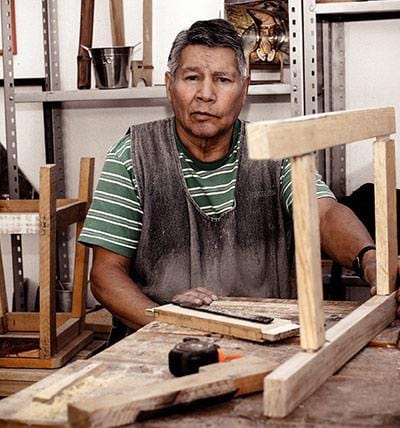Let me tell you about the history of the rolling pin, specifically those made of Glass. Now, when it comes to rolling pins, my friend, they've been around for quite some time.
The first rolling pin to ever grace the kitchen scene wasn't made of Glass but rather wood. Can you imagine that? Wood! Back then, bakers used this wooden rolling pin, with its trusty handle and cylindrical shape, to flatten that dough like nobody's business.
But let's focus on those Glass rolling pins, shall we? Glass rolling pins, my dear fellow, are a sight to behold. They're not your ordinary kitchen tools, no siree! These beauties are made of sturdy Glass and come in all shapes and sizes. From smooth cylindrical wonders to those with a taper at one end, they're designed to help that baker flatten and shape their dough with finesse.
Now, where did these marvelous Glass rolling pins originate, you ask? Let's take a little trip back in time to the ancient Etruscans. My friend, these folks were ahead of their time because they first rolled out their bread dough using a cylinder. Yes, the Etruscans were the pioneers of the rolling pin! They used this ingenious tool to flatten their bread dough and create those delectable loaves that would make anyone's mouth water.
As time passed, rolling pins made their way into kitchens worldwide. Wooden rolling pins, often made from maple, became the go-to choice for many bakers. Some even preferred marble rolling pins, which they would chill with cold water to keep that pie crust dough in check. Others, adventurous souls that they were, ventured into puff pastry and discovered that glass rolling pins were the secret to achieving that light and airy texture. Oh, the wonders of puff pastry!

But glass rolling pins aren't the only ones that have graced the baking scene. No, sir! We've got a whole assortment of materials to choose from nowadays.
Ceramic, porcelain, silicone—you name it, we've got it. And let's not forget the nifty stopper at the end of some rolling pins, often made of cork, to help keep that dough in place as you work your magic.
So there you have it, my friend. The history of the rolling pin, with a special focus on those magnificent glass wonders.
From the first rolling pin made of wood to the Etruscans paving the way to the variety of materials we have today, the rolling pin has truly left its mark on baking. So next time you find yourself in the kitchen, channel your inner baker and grab that rolling pin.
The Evolution of the Rolling Pin: Tracing the History of this Culinary Tool
This culinary tool has transformed, and I'm here to spill the beans. So hold on tight, and let's dive right in!
- Wooden Wonders: In the early days, rolling pins were made of trusty old wood with handles for a sturdy grip. Cooks used them to flatten dough like nobody's business. They were the unsung heroes of the kitchen!
- The Etruscan Influence: Those ancient Etruscans knew a thing or two about rolling pins. They were the pioneers, my friends! They flattened their bread dough using cylindrical wonders and set the stage for future bakers to shine.
- Size Matters: As time passed, rolling pins didn't shy away from change. They came in different shapes and sizes, catering to the needs of bakers far and wide. From slim to thick, it's all about finding the perfect diameter for that perfect pastry.
- Enter the Helpers: But wait, there's more! Rolling pins aren't just for flattening dough anymore. They're versatile little devils. Some even have silicone coatings to prevent sticking. Now that's what I call slick and stylish!
- Keeping it Etruscan: Throughout the ages, the spirit of the Etruscans remained alive. Their influence can still be felt today in the world of rolling pins. So next time you're baking up a storm, remember those trailblazing Etruscans and give your rolling pin a nod of appreciation!
There you have it, folks! The evolution of the rolling pin, from its humble wooden beginnings to its modern-day versatility. So the next time you're in the kitchen, grab your rolling pin and spin it. It's a tool that's stood the test of time, just like our love for cooking and creating delicious treats.
From Glass to Wood: Exploring the Different Types of Rolling Pins Throughout History
From Glass to wood, we will explore the different types of these marvelous kitchen tools that have graced our culinary adventures throughout history. So, let's dive right in and uncover the secrets of the rolling pin!
- The Glass Frontier: Back in the day, glass rolling pins might have been rare, but they certainly had their fans. Sailors, in particular, were known to appreciate these beauties. With a knob at the end of the rolling pin, they were perfect for rolling out that cookie dough and creating sweet treats for their sweethearts.
- Antique Treasures: Oh, the allure of old rolling pins! Antique rolling pins have a charm of their own. Some were made of porcelain, adding a touch of elegance to the baking process. Others were crafted from hardwood, like the ever-popular Tax rolling pins or the ornate Nailsea pins. These beauties were a sight to behold and often sought after by collectors and baking enthusiasts alike.
- Versatile Innovations: New rolling pin designs hit the scene as time passed. From marble and silicone rolling pins to those filled with cold water or even ice, bakers were getting creative! Some rolling pins were made of hardwoods, ensuring durability for years. Others came with ball bearings, creating a smooth and effortless rolling experience.
- Clay and Tortillas: Rolling pins aren't just for cookie dough, my friends. Our ancestors used baked clay rolling pins to create intricate patterns and designs on their culinary creations. And let's not forget the trusty tortilla rolling pins, perfect for those tasty flatbreads!
- Modern Marvels: Our kitchens have a wide range of rolling pins today. Non-stick rolling pins make the dough glide effortlessly, while marble and silicone pins stay cool to keep that buttery pastry just right. Whether you're a professional chef or a home cook, there's a rolling pin to suit your needs.
So there you have it, my friends! The fascinating world of rolling pins, from the glass pioneers to the hardwood classics and today's innovative designs. Take a peek into your grandma's cookbook, and you might find a cherished recipe that calls for a trusty rolling pin. So dust off your rolling pin, roll up your sleeves, and let's get baking!
The Role of the Rolling Pin in Pastry Making: A Journey Through Sweet Delights
When it comes to pastry making, the rolling pin takes center stage, guiding us through a delectable journey of sweet delights. This humble kitchen tool, used by bakers far and wide, is the secret behind perfectly flaky pie crusts and tender doughs. Whether you're a seasoned pastry pro or a novice in recipes and cooking, the rolling pin is a trusty sidekick. Two rolling pins come to mind, each with unique charm and purpose.
First, the classic wooden rolling pins are crafted from sturdy timber and boast a smooth surface that effortlessly glides over the dough. These pins, often made from high-quality wood, have been a staple in kitchens since immemorial, offering the perfect balance of control and ease. Then, there's the porcelain rolling pin, an elegant beauty that brings sophistication to any baking endeavor.
With its delicate form and cool touch, this rolling pin gently caresses the dough, leaving a lasting impression. But let's not forget how rolling pins came to be. They trace their origins back to the ninth century when enterprising bakers fashioned their makeshift pins from sand, ice, and rum-soaked wood. As time went on, these inventive pioneers honed their craft, crafting rolling pins out of ceramics and Glass, each with its own unique qualities.
Glass rolling pins became popular in the late 1800s, offering bakers a clear advantage by allowing them to see the dough's consistency and spot any hidden imperfections. Some even featured grooves or patterns to give baked goods an extra touch of elegance.
Today, we can find various rolling pins for sale, catering to every baker's preference. Whether you're after a traditional wooden pin, a sleek porcelain companion, or an avant-garde glass marvel, there's a rolling pin to suit every culinary endeavor. As a curator of kitchenware, I've witnessed the invaluable role these rolling pins play in the art of making pies, pastries, and other delicate treats. From their ability to smoothly roll out dough to their uncanny knack for shaping and fluffing, these trusty cooking implements deserve a place in every baker's toolkit. So, next time you embark on a baking adventure, don't forget to reach for your trusty rolling pin—the unsung hero of the pastry world.
Unearthing the Rolling Pin's Influence on Sugar Cookies: A Delicious Tale
Unearthing the Rolling Pin's Influence on Sugar Cookies: A Delicious Tale
- When it comes to baking sugar cookies, the rolling pin takes the lead in shaping the dough into delightful treats.
- Bakers have long relied on rolling pins to flatten the dough to the perfect thickness, ensuring a uniform bake.
- Two common rolling pins used for sugar cookies are the classic wooden and glass pins.
- Wooden rolling pins, crafted from sturdy wood, offer a traditional touch, allowing bakers to control the pressure and roll out the dough easily.
- Glass pins, on the other hand, bring a modern twist, their smooth surface preventing the dough from sticking and giving bakers a clear view of any imperfections.
- It's fascinating to see how rolling pins have evolved. From the days when bakers homesteaded and fashioned pins from materials like sand, ice, or even rum-soaked wood, to the patenting of more sophisticated designs.
- Today, we can still appreciate the rolling pin's enduring legacy as it plays a vital role in helping us create mouthwatering sugar cookies.
Shaping Culinary Traditions: How Rolling Pins Have Given Rise to Different Shapes and Techniques
Rolling pins, oh, what versatile tools they are! These trusty companions have flattened dough and shaped culinary traditions throughout history. From humble beginnings, where bakers used rolling pins made of wood, to the present day, with various kinds of rolling pins at our disposal, these timeless implements have left their mark.

Bakers have found ingenious ways to mold the dough into exquisite forms when it comes to rolling pin techniques. The pin's smooth surface, often chilled with condensation or ice to keep the dough from sticking, lends itself to intricate creations. Some bakers even infuse their pins with a touch of rum, adding a hint of flavor and a sense of adventure. The artistry lies in rolling the pin to roll out the dough and skillfully manipulating its movements. The pin becomes an extension of the baker's hands, guiding the dough into shapes that elicit awe and hunger.
As we savor the delectable dishes made possible by these humble rolling pins, we can't help but marvel at the rich culinary tapestry they have woven throughout history. And their influence continues to shape our traditions and bring joy to our tables today.
Conclusion
In conclusion, the history of the rolling pin is a captivating tale that spans centuries. From its humble beginnings as a simple tool, the rolling pin has rolled into our hearts and kitchens, becoming an indispensable ally in baking. Through the ages, we have witnessed its evolution from pins made of wood to the diverse range of options available today. The rolling pin's ability to roll out dough with precision and grace has shaped culinary traditions and given rise to delectable creations. It has stood the test of time, remaining a steadfast companion to bakers worldwide. So, as we reach for our trusty rolling pin to roll out the dough, let's appreciate the rich history and enduring legacy it holds. After all, the humble wooden pin connects us to the bakers of old and continues to inspire us in our culinary endeavors.

Question Time
Why do people use rolling pins to roll dough? Are they just fancy sticks?
Well, let me tell you, my friend, rolling pins aren't just any ol' sticks! They've got a rich history that dates back centuries. Back in the day, bakers and cooks realized that using a rolling pin made it easier to flatten and shape the dough. They found that by applying pressure and rolling that dough out, they could create delicious treats like pies, pastries, and cookies. So, they took those trusty wooden pins and put them to work! The rolling pin became a staple in kitchens worldwide, including ours today!
Where did the idea of using wooden rolling pins come from? Can't you roll dough with anything else?
Let me enlighten you about the origins of those wooden rolling pins we loved so much back when people were clever and resourceful. They saw the potential of using a cylindrical object to flatten the dough, and what better material to use than good ol' wood? The sturdy nature of wood made it perfect for this task. Those crafty bakers and cooks fashioned rolling pins out of wood, creating a tool that stood the test of time. And guess what? We're still rolling with wooden rolling pins today!
Why do we still use wooden rolling pins instead of modern alternatives? Can't we upgrade to something fancier?
Ah, my dear friend, sometimes the old ways are best. Wooden rolling pins have a charm and simplicity that can't be beaten. Sure, there are plenty of modern alternatives, like sleek metal or fancy silicone pins, but there's something special about the warmth and character of a wooden rolling pin. Plus, wooden pins are known for absorbing excess moisture from the dough, making them easier to work with. So, why fix what ain't broken? Wooden rolling pins have stood the test of time and are the beloved choice for bakers and cooks like us today!
ABOUT THE AUTHOR
Fred Felton
Content Creator / Editor
Fred Felton is a copywriter, editor and social media specialist based in Durban, South Africa. He has over 20 years of experience in creating high end content. He has worked with some of the biggest brands in the world. Currently Fred specialises in the wooden arts and crafts space, focussing on innovative wooden product design. He is also a keynote speaker and has presented talks and workshops in South Africa.






